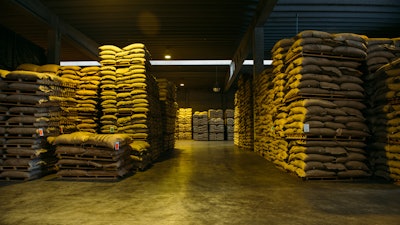
With quarantine regulations the norm, non-perishable food products are a popular choice among consumers. While they’re ideal for this unique stay-at-home era, the ingredients used in these products are also a primary food source for stored product pests. Small but mighty, these pests are capable of damaging your goods, reputation and bottom line.
Implementing proactive pest management measures such as strict sanitation practices and regular facility maintenance can help keep stored product pests out of your ingredients, processed goods and your facility. Cleanliness has always been a top priority in the food processing industry, but the recent global health pandemic has intensified concerns about virus transmission. A stringent sanitation routine can help eliminate the conditions for pests to thrive.
Knowing how to spot the signs of a stored product pest problem is a critical first step in preventing an infestation.
Signs of Stored Product Pests
Stored product pests typically burrow their way into your ingredients and products via shipments in any stage of the supply chain process.
While pests such as flour beetles, weevils and Indian meal moths can taint foods and make them unsuitable for human consumption, they do not spread any known foodborne illnesses. This doesn’t mean these pests should be ignored as they can become a costly and unexpected business expense if an infestation occurs.
Flour beetles tend to give off a foul odor when present, while signs of webbing in your products can point to spider beetles. Unable to penetrate most packaging, sawtoothed grain beetles hunt for holes in packaging, which can be one millimeter in diameter, and lay eggs near the opening. Larvae then squeeze through the hole once hatched and begin feeding on product!
To prevent stored product pests from contaminating your products, use the following prevention tips as a checklist for your facility.
Maintain a Sanitary Processing Facility
- Sanitize all food preparation spaces daily and clean up spilled goods immediately
- Address damaged packaging by immediately quarantining the product for reprocessing or return.
- Disinfect all high-touch, hard non-porous surfaces with a powerful disinfectant to kill any bacteria and pathogens lurking in your facility.
- Regularly revise your waste management schedule to update your trash removal days so you can avoid overflow issues that attract pests to your location.
Proper Facility Maintenance
- Inspect all incoming and outgoing shipments to ensure you are not bringing pests into your facility or sending them out to consumers.
- Regulate the temperature in your storage and manufacturing spaces. Cooler temperatures are known to slow down stored product pest reproduction.
- Practice first-in, first-out protocols with all deliveries and try not to store dry ingredients for long periods of time.
- Inadequately sealed expansion joints in the floor are often areas that harbor spillage, and therefore, stored product pests. Conduct regular inspections to identify and seal these cracks.
In addition to following these tips, communicate with your supply chain to ensure they are monitoring for pest activity within their own facilities and work with your pest control provider to schedule regular inspections of your facility. This will highlight potential pest pressures and allow for effective treatment should they discover a pest problem.
Being proactive about pest management also requires buy-in from your employees so speak to your pest control provider about a complimentary training.
As sales of non-perishables remain top-of-mind, food processors must implement preventative measures to help keep stored product pests away from their product. Partnering with a reliable pest control provider can help ensure this. A rule of thumb to keep in mind is that if you aren’t monitoring for it, you probably aren’t going to find it. Work with your pest control provider to monitor for all of the species that might attack your product. Remember, early detection of a problem can protect your business’s reputation and bottom line in the long run.
 Black
Black
Judy Black is the Vice President of Quality Assurance and Technical Services for Rollins, Inc. A board-certified entomologist and PMP Hall of Fame recipient, she has more than 30 years of experience in the pest management field and is an acknowledged leader in the industry. For more information, email [email protected] or visit www.orkincommercial.com.























